#gallinaceas
Text
DON GALLO CATÉDRAL
DON GALLO CATEDRAL
Sacerdote de su casa
curita de capilla
don Juan de fiestas
El caballero es modelo en el hogar
buen padre y amante esposo
cumplidor rey en su comarca.
Curita de la calle amante de varias
hijos sin nombre con palmaditas idénticos
sumiso lacayo servicial domesticado pollito.
Visitante inagotable de las casas secretas
a todas las doncellas llena de gemas y dádivas
billete generoso a los placeres de almíbar.
Jefe supremo del respetable hogar
señorón querendón y fraterno consejero
ejemplo de familia liderando la sociedad.
Compadrito de milagros y bautizos
jarano de fiestas patronales, padrino con monedas doradas
con las alas abiertas hasta el coraje de madrugada.
Cuita de secretos de alcoba
sepulturero del placer jalea de hirviente sopón
corona a las pombas de caricias perfumadas.

Sacerdlote, cura, don juan, tres insignias
del gallo cantor de pico a pico juega el palenque
si entierra pico gallo asado cresta cae.

#gallows#river gallo#pico de gallo#gallo#gallodepelea#gallina#gallinas#gallinaceas#refrán#literatura#poesia#moraleja#picoftheday#pico#picodegallo
0 notes
Photo

#FOWL #inktober #inktober2022 #inktoberart #inktoberchallenge @jakeparker @inktober #inktoberfowl #gallinaceas #aves #dibujo #drawing #ink #tinta #bufolandcomics #bufoland #puertomontt #chile #melipulli https://www.instagram.com/p/CkGt5xNpNCB/?igshid=NGJjMDIxMWI=
#fowl#inktober#inktober2022#inktoberart#inktoberchallenge#inktoberfowl#gallinaceas#aves#dibujo#drawing#ink#tinta#bufolandcomics#bufoland#puertomontt#chile#melipulli
1 note
·
View note
Text


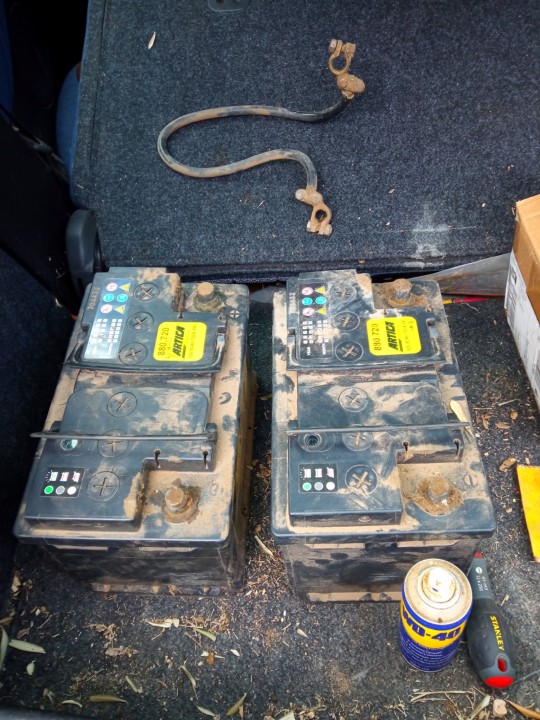
Come tribolare in un pomeriggio piovoso.
99 notes
·
View notes
Photo
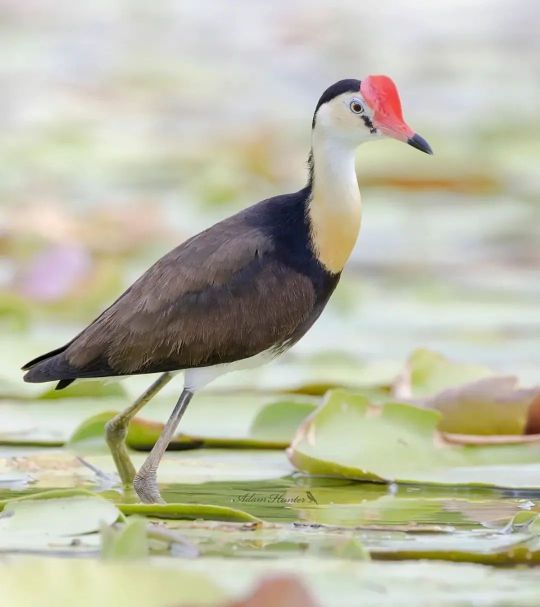
Comb-crested Jacana
212 notes
·
View notes
Photo

A new variant has been added!
Comb-crested Jacana (Irediparra gallinacea)
© Nicolas Huet, Jean Gabriel Prêtre
It hatches from coral, east, large, northern, odd, and red eggs.
squawkoverflow - the ultimate bird collecting game
🥚 hatch ❤️ collect 🤝 connect
1 note
·
View note
Text

[2577/11080] Comb-crested jacana - Irediparra gallinacea
Order: Charadriiformes
Suborder: Scolopaci
Family: Jacanidae (jacanas)
Photo credit: Hayley Alexander via Macaulay Library
152 notes
·
View notes
Text
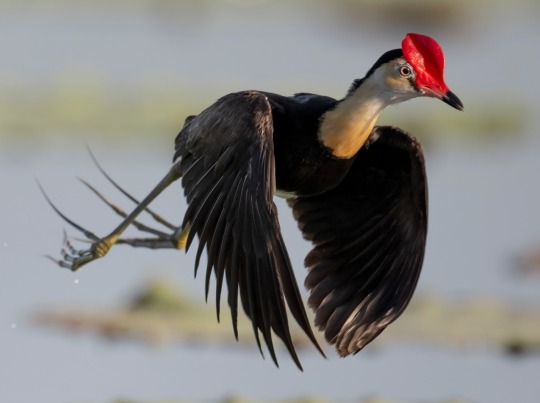
Comb-crested Jacana (Irediparra gallinacea), family Jacanidae, order Charadriiformes, Australia
photograph by Paul Thomsen
208 notes
·
View notes
Text
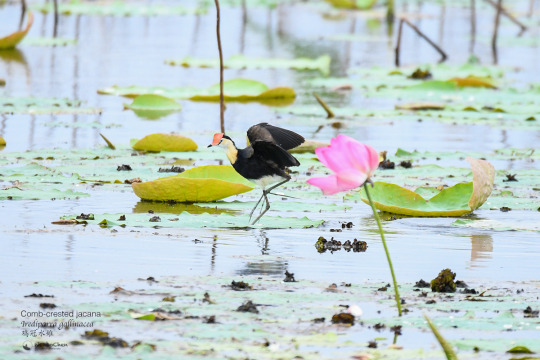
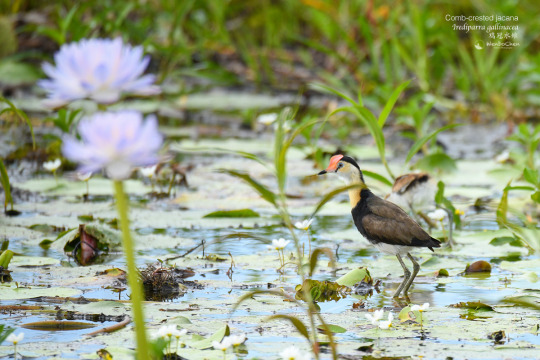



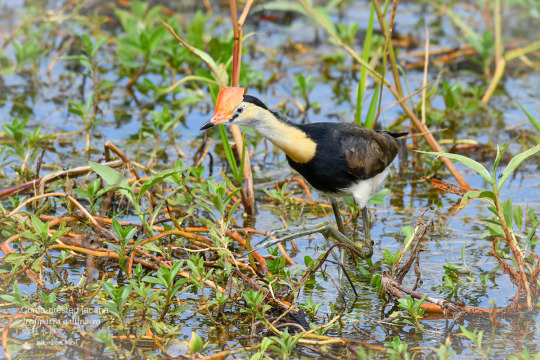

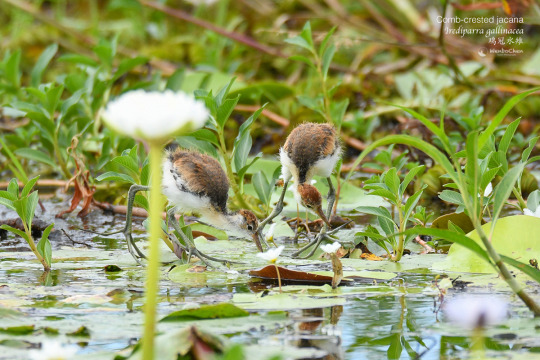
The comb-crested jacana (Irediparra gallinacea) is the only species in its genus. It lives in freshwater wetlands in SE Asia, New Guinea and northern Australia. The large feet are designed to walk on floating or emerging vegetation. It is a polyandrous species, which means the females mate with multiple males, lay eggs in their nests, and the males incubate.
5 notes
·
View notes
Photo
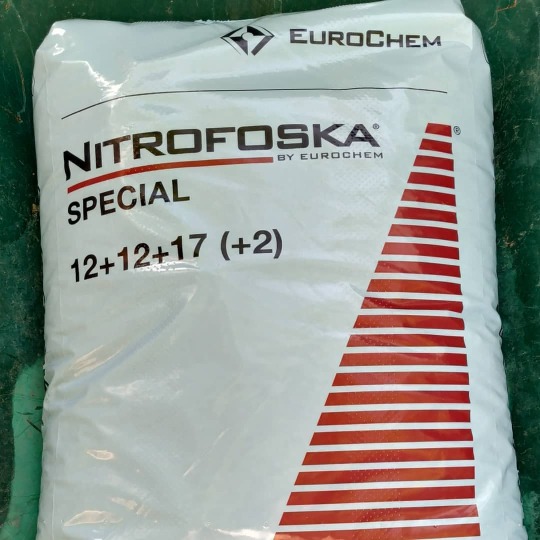
Hoy ha tocado #comprar #comida para la #plantacion Por un lado #abonomineral y por otro #abonoorganico de #gallinaceas que bien mezclados van a ir a mis #tomates #pimientos y #calabacines #fosforo #nitrogeno #potasio #magnesio #azufre #abono #ecologico #agriculturaecológica (en Tudela, Navarra, Spain) https://www.instagram.com/p/CBL_DJBip67/?igshid=jiuogkm6ugva
#comprar#comida#plantacion#abonomineral#abonoorganico#gallinaceas#tomates#pimientos#calabacines#fosforo#nitrogeno#potasio#magnesio#azufre#abono#ecologico#agriculturaecológica
0 notes
Photo
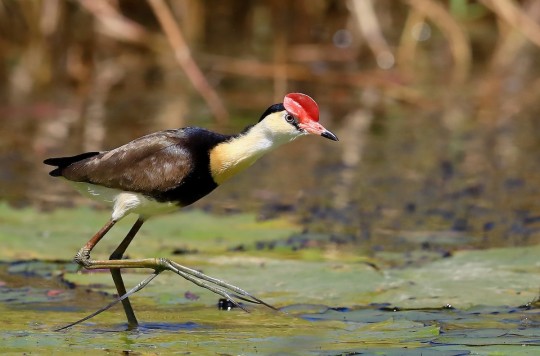
Comb-crested Jacana (Irediparra gallinacea)
© Tony Ashton
69 notes
·
View notes
Photo

Comb-crested Jacana (Irediparra gallinacea)
© Bjorn Svensson
65 notes
·
View notes
Photo

170 notes
·
View notes
Text
Leipoa ocellata, L. gallinacea
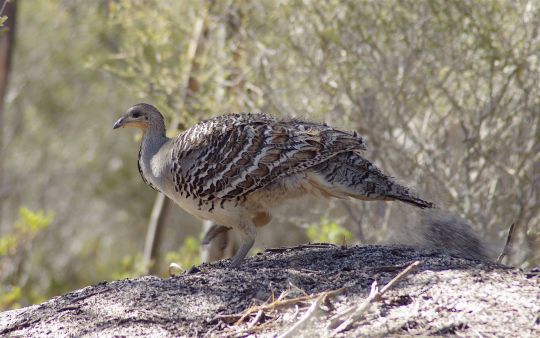
By Butupa, CC BY 2.0
PLEASE SUPPORT US ON PATREON. EACH and EVERY DONATION helps to keep this blog running! Any amount, even ONE DOLLAR is APPRECIATED! IF YOU ENJOY THIS CONTENT, please CONSIDER DONATING!
Name: Leipoa ocellata, L. gallinacea
Status: Extant
First Described: 1840
Described By: Gould
Classification: Dinosauria, Saurischia, Eusaurischia, Theropoda, Neotheropoda, Averostra, Tetanurae, Orionides, Avetheropoda, Coelurosauria, Tyrannoraptora, Maniraptoriformes, Maniraptora, Pennaraptora, Paraves, Eumaniraptora, Averaptora, Avialae, Euavialae, Avebrevicauda, Pygostylia, Ornithothoraces, Euornithes, Ornithuromorpha, Ornithurae, Neornithes, Neognathae, Galloanserae, Pangalliformes, Galliformes, Megapodiidae
Leipoa is a genus of two species of Megapode, one living, and one extinct - the Malleefowl, L. ocellata, and the Giant Malleefowl, L. gallinacea. The genus first appears about 2.6 million years ago, in the Gelasian age of the Pleistocene, and today lives on in the smaller Malleefowl. Both species in this genus live in Australia; the Malleefowl known from the Murray-Murrumbidgee Basin, the Simpson Desert, and the southwest corner of Western Australia. It lives, indeed, in many Important Bird Areas, where it often breeds in its characteristic mounds.
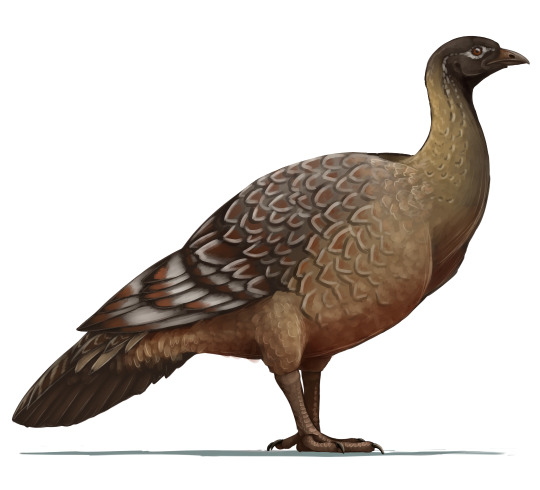
By Scott Reid on @drawingwithdinosaurs
The Giant Malleefowl, L. gallinacea, is known primarily from the deposits in Darling Downs and Chinchilla in Queensland, the Wombeyan Caves of New South Wales, and notably in Komatsu Cave in South Australia as well. Known from fossil remains as well as eggshells, it was much larger than living Malleefowl, and sexually dimorphic as well. They could weigh anywhere between 4 and 7 kilograms, and it was basically just a normal Malleefowl but scaled up and, thus, more robust. Still, despite its huge bulk, it could probably fly, due it its strong keel. It laid its eggs in warm sand and soil, in the shape of a mound.
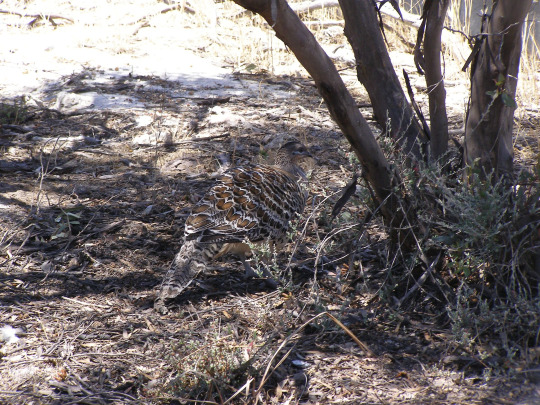
By Kerry Raymond, CC BY-SA 3.0
Malleefowl today are vulnerable to extinction, primarily due to the introduced red fox, as well as habitat fragmentation and destruction, as well as frequent drought from climate change. A shy, solitary bird, they only fly to escape danger, and to find trees for roosting. Breeding pairs roost and feed apart, and really only socialize to mate; in the winter, the male scrapes a depression in the ground with his feet, and then collects leaves and sticks to fill it in the early summer. He builds it into a nest mound, and after it rains, he mixes the material so it will decay. He then builds a little egg chamber in the middle of the rotting vegetation. THe female will then lay eggs at the beginning of the summer, and then more soil is added on top to regulate the temperature. They do mate for life, weirdly enough, and the males defend the nests, though the hatchlings are not taken care of by the parents. Upon hatching, the chicks will pop out of th enest with no warning, take a deep breath, and then freeze for up to 20 minutes, before leaving quickly and disappearing into the scrubland. Truly, one of the weirdest, most unique adaptations of any dinosaur group.
Buy the author a coffee: http://ko-fi.com/kulindadromeus
Sources:
https://en.wikipedia.org/wiki/Leipoa
https://en.wikipedia.org/wiki/Giant_malleefowl
https://en.wikipedia.org/wiki/Malleefowl
#leipoa#leipoa ocellata#leipoa gallinacea#malleefowl#giant mallefowl#bird#dinosaur#birblr#palaeoblr#pheasant#chic#paleontology#prehistory#prehistoric life#dinosaurs#biology#a dinosaur a day#a-dinosaur-a-day#dinosaur of the day#dinosaur-of-the-day#science#nature#factfile#Dìneasar#דינוזאור#डायनासोर#ديناصور#ডাইনোসর#risaeðla#megapode
52 notes
·
View notes
Text
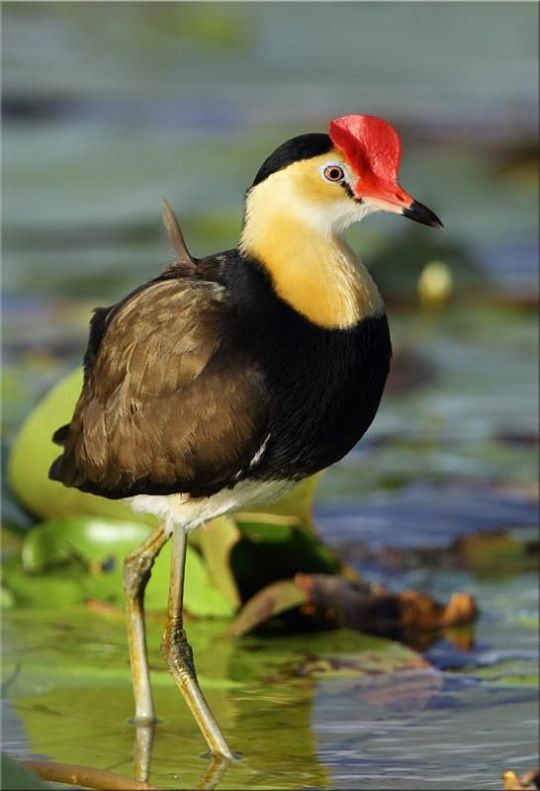
Comb-crested Jacana (Irediparra gallinacea)
Photo © David Taylor
4 notes
·
View notes
Photo
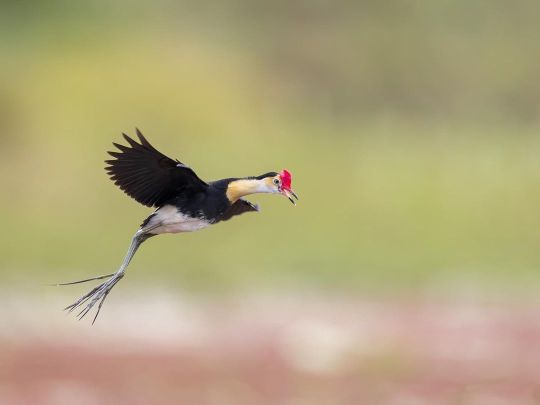
Comb-crested Jacana
16 notes
·
View notes
Note
Sir, what are the names for the different types of meats in Old Cyrodiilic? Is there a word for the Bosmer unthrappa in the ancient form of our language? - Rafaello Flavius
The names of a few different types of meat in Old Cyrodiilic are as follows: pork is called porcina, beef is bubula, the meat of the chicken is called gallinacea, and lamb is agnina.
The Bosmer word unthrappa is usually left untranslated, rendered as a first declension feminine noun, but perhaps a more accurate name would be humana.
2 notes
·
View notes